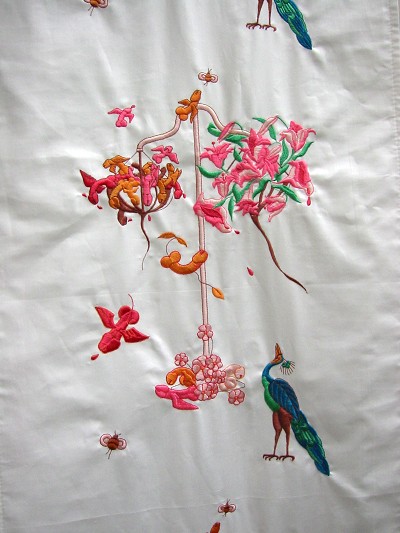For this exhibition, a response to the V&A’s collection was developed through digital processes. The project explored historical methods through the lens of contemporary technology, using tools such as Photoshop, digital fabric printing, and digital embroidery. Inspiration was drawn from the Devonshire Tapestries—particularly Susanna and the Elders—as well as the Melville Bed, 18th-century costume and embroidery traditions, and the engraved and embroidered interpretation of The Conversion of Saint Paul after Rubens.
The well-known narrative of Susanna and the Elders was reimagined to centre Susanna’s agency as she resists the moral burden imposed by the elders. Historically, Renaissance depictions showed Susanna nude, while English needlework of the 17th and 18th centuries—favouring tales of virtuous women—often portrayed her clothed. This contrast informed the decision to reposition the story within the context of 18th-century aristocratic excess and theatricality.
Performance played a central role in the development of the work, with Susanna enacted alongside two male figures, reframing her as a self-determined woman negotiating themes of sexual freedom and power in a more permissive cultural moment. The final installation included a large digital print on viscose, displayed as a wall hanging, alongside digitally embroidered banners. These banners incorporated decorative motifs sourced from 18th-century garments and furnishings, employed to symbolise central themes of the narrative. One notable reference was the Melville Bed—a baroque artefact created as a statement of wealth and status, rather than for functional use. Within the story, Susanna’s noble status served to intensify the reputational threat posed by the elders’ attempted coercion.
The project was supported by Camberwell College of Art, the AHRB, and Loughborough University.

